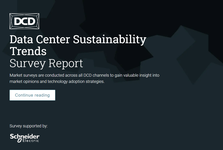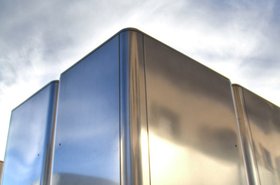New ideas full of promise are always worth hearing about. So you’ve seen a lot of material on liquid cooling here at DCD over the last decade or more.
There’s a range of liquid cooling approaches, which circulate water through cabinet doors, pipe liquids direct to chips or to coldplates adjacent to them, precision-cool specific electronics, or even immerse the whole rack in a bath of dielectric fluid.
Liquid benefits
In a nutshell, liquid cooling looks like the way to go. It removes more heat using less energy than air, because fluids have a bigger heat capacity, it is much quieter and, preserves equipment from shock and vibration.
It’s also a much better environmental citizen, as liquid cooling removes heat in a usable form. If you cool your servers with fluid, you can expect them to give you piping hot water. That can be used elsewhere, and helps the community save on energy used for heating.
All these points are true.
The power densities required by the next generation of AI racks will be such that only some kind of liquid cooling will be good enough to stop the IT from overheating. And heat reuse has now entered the public consciousness, so measures like the German Energy Efficiency Act are requiring data centers to consider it, while the European Energy Efficiency has it on its radar.
But given all that, there is still a huge emphasis on air cooling in the industry.
This week DCD ran a whole online event about air cooling. We also got our copy of the Wiley/Blackwell book, Data Centre Essentials, a long-awaited primer that explains the sector in some depth - a book that deserves its own in-depth coverage on this site.
But guess how much coverage the Essentials book gives to liquid cooling? Its chapter on cooling focuses on the nitty-gritty of air cooling, and it mentions liquid only in passing.
What’s going on?
Cooling for the minority
However good its technical credentials, liquid cooling is still very much a minority interest. Supercomputers and specialized applications like Bitcoin can indulge in it. Radical approaches like Deep Green’s distributed heating solutions can use it to provide much-needed heat to external users, but it is rarely taken up.
Air cooling vendors admit that liquid cooling is coming. “There's only so much heat you can remove using air,” Mukul Anand, global director of business development for applied HVAC products at Johnson Controls, told us.
AI hardware needs liquid cooling but it won’t replace air cooling, and a lot of it will be installed as part of a system that eventually expels heat through an air-conditioning system, just as data centers have since they first emerged.
Our Keeping it Cool - Air event this week went into some of the reasons behind this, and we have a cooling supplement due shortly that will go into this in more depth.
Among the factors, consider that air conditioning units have a longer lifespan than IT hardware. An HVAC system will cool a data center for 20 years or more, during which time there will be three generations of chips, each with different cooling needs.
Cooling in the racks will evolve, but in traditional large data centers, those high-density racks will initially occupy a small part of the building, and it will be natural for the liquid to stay at the rack level, and be integrated into the building’s existing systems.
The conventional air-cooling units will sit on the roof, adapting to whatever the inside of the building throws at them. Liquid cooling will just extend what they do.
Some of the high-temperature heat may channeled for use elsewhere but it seems most of the heat removed by those liquid systems will be rejected out through conventional air-conditioning units. That’s what Anand told us, and colleagues involved in liquid cooling said much the same in a panel session.
Throwing the baby out with the hot water
But if we are rejecting the heat this way, there’s a big downside. We lose one of the most vaunted environmental benefits of liquid cooling - the provision of waste heat in the concentrated form of higher-temperature water.
It also seems to be the case that liquid cooling implementations are being run at lower temperatures than were predicted, which again reduces the potential for generating useful heat.
“The sad part about it from a sustainability perspective is you are not raising any temperatures,” Stuart Lawrence, VP of product innovation and sustainability at Stream Data Center told us. “We're not we're not getting the real sustainability benefits out of liquid cooling by utilizing this air extension technology.”
After all this is said, liquid cooling is still the way of the future. We are going to see massive amounts of it coming into use, and it is the only way to handle the systems coming down the pike.
But it looks very much as if it will be a more complex matter than it promised to be when it was still on the drawing board.





